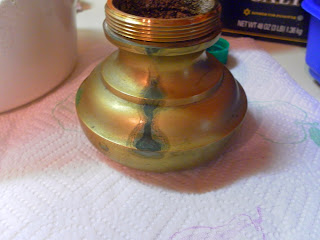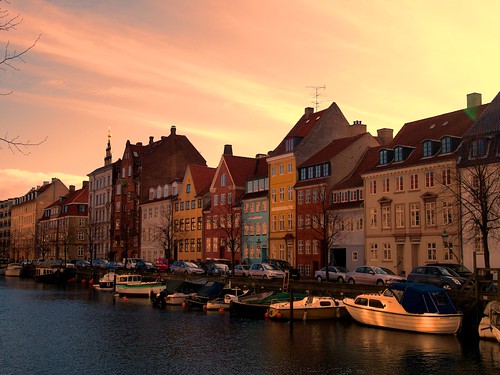Vintage Teak Bowls Trays and Housewares
A Profile of Vintage Danish Modern
and
Mid-Century Modern Offerings
Want to begin accumulating vintage Danish Modern and Mid Century teak for your home? Or perhaps you are an avid collector seeking information? While vintage Danish Modern Teak furniture costs are soaring, vintage teak wooden serveware and housewares, such as salad bowls, cheese boards, salt and pepper grinders and sets, trays, as well as candlesticks remain affordable. Some vintage offerings are down-right inexpensive. If you are willing to put a little time and effort into refurbishing many vintage Danish Modern pieces can be picked up for a song.These vintage "touches" will help transform your contemporary modern minimalist pieces and deliver the authentic vintage vibe you seek. For beginning collectors, I recommend creating a purchasing plan which includes creating a wish list of items you would like to use daily and those which you want to purchase as an investment. Learning a little history, design principals, and understanding the vintage market prior to making purchases will ensure you get the most value for your money.
A little Danish Modern History
From a design aspect the Danish Modern movement began in the 1920's; but really took hold in the early 1930's continuing through World War II. It has been said during the depression years and World War II into the post war era, European and Scandinavian designers took to their roots in both design principals as well as materials. These new designs, born of frugality, honored the past but perhaps more importantly displayed an awakening spirit of hope for the future.In Danish Modern furniture design, prior to using teak, many Scandinavian designs were made of local woods such as pine. An American aesthetic for darker woods influenced Danish Modern designers. Additionally, the advent of new post war glues and technologies such as bent plywood (which made for a stronger union of wood and metal) opened the door to exciting new affordable designs. Once Danish Modern designers discovered teak, known for it's attributes of being a hard, lightweight and water resistant wood, Denmark quickly became the largest worldwide importer of teak in the 1950's.
High consumption combined with poor forestry and plantation conservation practices, during the thirty year period between 1950 and 1980, accounted for the decline of teak resources worldwide and the consequential spiraling cost. In the early 1980's many countries instituted policies to improve and maintain teak conservation practices. Exports became regulated and plantations were governed to assure teak remained as a sustainable resource. Why is this important?
Availability impacted both price and design. As you will learn the age of teak importers, not coincidentally, ended in the 1980's. During that 30 year period of time not only product design but also manufacturing practices changed in order to remain competitive in the market. Many Danish modern designs which heretofore were executed in Denmark with imported teak, were now manufactured in the country of origin. Indeed, designs were changed to provide a more economical use of wood. A good example of this is evidenced with the evolution of the country of manufacture of Dansk bowls; early bowls were manufactured in Denmark but quickly began being produced countries like Thailand and Malaysia. Indeed, even now, global teak availability and prices are impacted by the practices during this thirty year time period. Hence, making the purchase of vintage teak products is not only fun but also affordable and a "green" practice.
When considering mid century teak salad bowls, serveware, candlesticks, toys and trays for purchase you owe it to yourself to 1.) know a little history, 2.) define your budget and, 3.) understand basic construction and design in order to maximize your options.
A Bit of History - Vintage Teak Serveware and Housewares Mass Market Manufacturers - Importers
Resourcing information for Danish Modern name designers such as Kay Bojesen, Hans Bolling, Jens Quistgaard, Richard Nissen and their piers on the internet is a fun ride and you will find rich information. Conversely, there is much less information available for mass market manufacturers and importers. The latter being my main focus, because their products are reasonably priced and readily found online. Take a moment to discover the mass market manufacturers/importers in the mid-century tableware and housewares game. Knowing the names and a bit of the history will afford you many design and price options.
Mass Market Teak Housewares Manufacturers
Dansk Designs - 1954 - 1991 Formed in 1954 by Ted Nierenberg with designer Jens Quistgaard. In 1974 Dansk removed all designer references and changed their back-stamp to Dansk International Designs LTD. Dansk was purchased in 1985 by Dansk Acquisition Corp and was later purchased by Brown-Forman Corporation, under it's Lenox brand umbrella. In March of 2009 Clarion Capital Partners LLC purchased all the assets of Lenox from the Brown-Forman Corporation renaming the company Lenox Corporation which has kept the Dansk product name.[1] There is abundant information about both Dansk and Jens Quistgaard online which I will not further duplicate here.
 |
| Dansk Trademarks over the years. |
Dansk Teak Package Care Instructions
The following care instructions came with each wood item from Dansk Designs."Dansk Designs advises you to treat your wood pieces tenderly. Wood is sensitive to extremes of temperature, humidity and dryness. So store it in a well ventilated area away from radiators and strong sunlight."
"To keep this piece lustrous, clean it by wiping with mild soap and warm water. Dry thoroughly. And give it an occasional beauty rub with ordinary mineral oil."
*I would only note that today it is recommended you use food grade mineral oil. Which can easily be found at most big box stores, as well as hardware and home improvement centers.
Buying Tip: While Dansk was sold only first quality in the finer Department Stores, they also sold seconds and closeouts through a network of Factory Outlet Stores. Look for tags which may show the item was a second. Further, make there aren't unsightly knots and be sure all staves and inlay work are tight and sound. Aging glues and exposure to water can compromise the joints and the structural integrity of your piece.









